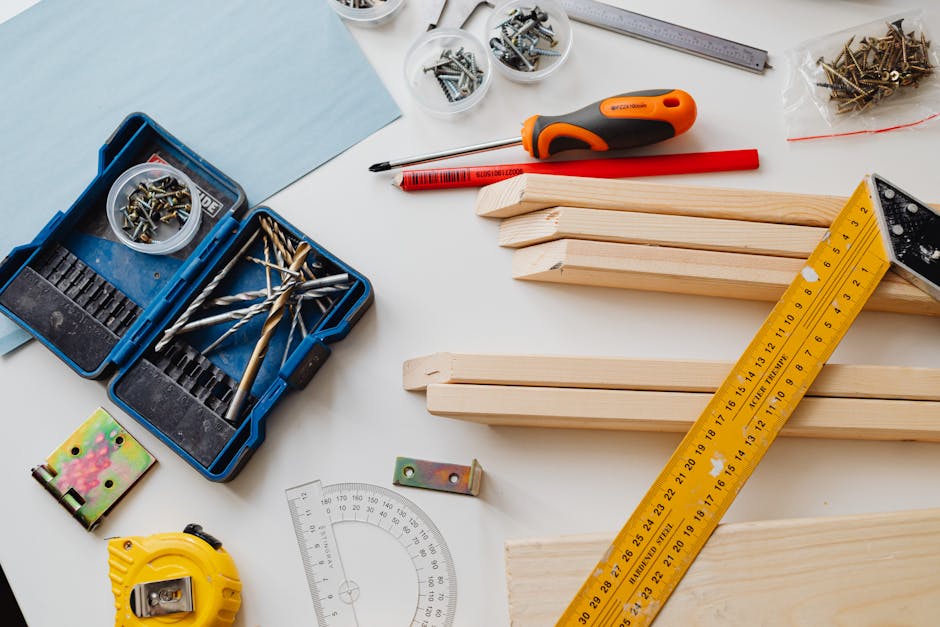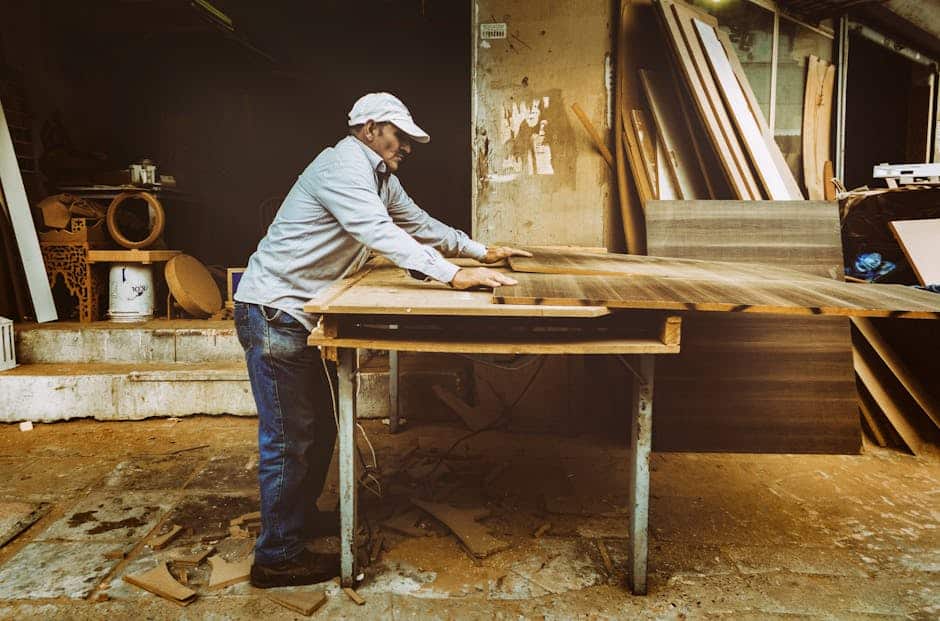Carpentry Repair: Top 7 Essential Services for 2024
Why Carpentry Repair is Essential for Home Improvement
Carpentry repair is a vital service for homeowners in Middlesex County, MA looking to maintain and improve the beauty and functionality of their homes. From fixing broken furniture to restoring damaged flooring, carpentry repair covers a broad spectrum of tasks that can breathe new life into your living spaces.
Quick overview of carpentry repair:
– Fix or restore damaged furniture, doors, windows, and floors.
– Address structural issues like damaged beams, joists, and studs.
– More cost-effective and environmentally friendly than complete replacements.
– Faster turnaround time compared to full replacements.
Maintaining your home often boils down to the details. Aspects like sturdy furniture, properly fitted doors, and intact flooring contribute significantly to the overall quality and feel of your house. Professional carpentry repair services ensure that even the smallest defects are expertly addressed, preventing them from escalating into bigger, more expensive issues.
I’m Tyler Tranni, owner and operator of Tranni Home Remodeling. With years of hands-on experience in carpentry repair, my team and I are committed to changing your home with high-quality craftsmanship and exceptional customer care. Continue reading to explore the process, benefits, and expert tips on carpentry repair.

What is Carpentry Repair?
Carpentry repair involves fixing or restoring wooden structures and items that have been damaged or worn down over time. These repairs can range from simple fixes like sanding and refinishing to more complex tasks such as structural repairs.
Scope of Carpentry Repair
Carpentry repair services cover a wide range of tasks. These can include:
- Furniture Repair: Fixing broken legs, repairing cracks, and replacing missing parts.
- Door and Window Repair: Addressing issues like broken hinges, worn-out locks, and damaged frames.
- Flooring Repair: Repairing or replacing damaged floorboards, fixing squeaky floors, and filling gaps between floorboards.
- Structural Repair: Repairing damaged beams, joists, and studs to ensure the structural integrity of a building.
Types of Repairs
- Furniture Repair: This involves fixing everyday items like chairs, tables, and cabinets. For instance, a broken chair leg can be reattached, or a cracked table surface can be filled and sanded.
- Door and Window Repair: Doors and windows are prone to damage due to constant use. Repairs can include fixing misaligned doors, replacing broken glass panes, and repairing window sills.
- Flooring Repair: Wooden floors can develop gaps, become squeaky, or suffer from water damage. Repairs might involve replacing damaged boards or refinishing the surface to restore its original look.
- Structural Repair: These are more significant repairs that involve the building’s framework. Common issues include sagging beams or joists that need reinforcement or replacement.
Carpentry Operations
Carpentry repair involves several key operations, such as:
- Cutting: This is the first step in many repairs. It involves cutting wood to the required size and shape using tools like saws.
- Shaping: After cutting, the wood may need to be shaped using tools like chisels and planes to fit precisely into the existing structure.
- Fastening: This involves securing the wood in place using nails, screws, or adhesives. Proper fastening is crucial for the durability of the repair.
- Preparation of Joints: Joints are where two pieces of wood meet. Preparing these joints correctly ensures a strong and seamless connection.
- Joinery: This is the final step where the prepared joints are assembled and secured. Joinery techniques vary depending on the type of repair and the wood being used.
Understanding these operations helps in appreciating the skill and precision required in carpentry repair. Whether it’s a small fix or a major structural repair, each task demands careful attention to detail and expertise.
Stay tuned as we dig deeper into the process, benefits, and expert tips on carpentry repair in the next sections.
Common Carpentry Repair Services
Carpentry repair services cover a wide range of projects, from minor fixes to major restorations. Here are some of the most common services you might need:
Window and Door Trims
Window and door trims are essential for both aesthetics and functionality. Over time, these trims can become worn, cracked, or damaged. Professional carpentry repair services can replace or restore these trims, ensuring they look good and function properly.
Wall Trims/Skirting Boards
Wall trims or skirting boards protect the bottom of your walls from damage and add a finished look to any room. If they are chipped, cracked, or warped, carpentry repair services can replace or repair them, enhancing your home’s appearance and value.
Sanding and Refinishing
Sanding and refinishing are crucial for maintaining wooden surfaces like floors and furniture. Over time, wood can become scratched or dull. Professional carpenters can sand down the surface and apply a new finish, making it look as good as new.
Deck Repair
Decks are exposed to the elements and can suffer from weather damage, rot, and wear. Carpentry repair services can replace damaged boards, reinforce the structure, and apply treatments to protect against future damage.
Molding Installation
Molding adds elegance and style to any room. Whether it’s crown molding, baseboards, or chair rails, professional carpenters can install these features to give your home a polished look.
Kitchen Cabinets
Kitchen cabinets endure a lot of wear and tear. Hinges can become loose, doors can misalign, and finishes can wear off. Carpentry repair services can fix these issues, ensuring your cabinets function well and look great.
Bookshelves
Bookshelves can suffer from leaning, sagging, or broken shelves. Professional carpenters can repair or reinforce these structures, making sure they are safe and sturdy.
Wood Rot Replacement
Wood rot is a serious issue that can compromise the structural integrity of your home. Carpentry repair services can remove the affected wood and replace it with new, treated wood to prevent future rot.
Portico or Pergola Repair
Porticos and pergolas add charm to your outdoor space but are susceptible to weather damage. Professional carpenters can repair or replace damaged parts, ensuring these structures remain beautiful and functional.
Each of these services requires skill and precision, highlighting the importance of hiring a professional. In the next section, we’ll explore the process of carpentry repair in more detail.
The Process of Carpentry Repair
Understanding the process of carpentry repair helps you see why hiring a pro is essential. Here’s a breakdown of the key steps involved:
First Fixing
First fixing involves the initial construction phase. This includes building the basic structure and framework. For example, installing beams, joists, and studs. This stage sets the foundation for the rest of the project.
Second Fixing
Second fixing is all about the finishing touches. This includes fitting doors, windows, and skirting boards. It’s the stage where your project starts to look complete. Proper second fixing requires precision to ensure everything fits perfectly.
Cutting
Cutting is a fundamental part of carpentry repair. Carpenters use various tools like saws and routers to cut wood to the required size and shape. Accurate cutting ensures that pieces fit together seamlessly.
Shaping
Shaping involves refining the wood to match the desired design. This might include planing, sanding, and routing. Shaping is crucial for both the appearance and functionality of the finished product.
Fastening
Fastening is the process of joining pieces of wood together. This can be done using nails, screws, or adhesives. The choice of fasteners depends on the type of repair and the materials involved. Proper fastening ensures durability and stability.
Preparation of Joints
Joints are where two pieces of wood meet. Preparing these joints is critical for a strong connection. There are various types of joints, such as dovetail, mortise and tenon, and lap joints. Each type requires specific skills and tools for proper preparation.
Joinery
Joinery is the craft of connecting wood pieces to form a single structure. It’s a specialized skill within carpentry. Quality joinery ensures that the final product is both strong and aesthetically pleasing.
Understanding these steps highlights the complexity of carpentry repair. Each stage requires skill and precision to ensure a high-quality result.
Next, we’ll look at the benefits of hiring a professional for your carpentry repair needs.
Benefits of Professional Carpentry Repair
High-Quality Craftsmanship
Professional carpentry repair ensures that you get the best quality work. Skilled carpenters have years of experience and training, which means they can handle complex repairs with ease. For example, fixing a broken beam or restoring antique furniture requires precision and expertise. High-quality craftsmanship means your repairs will last longer and look better.
Attention to Detail
Professionals pay close attention to every detail. This means that even the smallest issues, like tiny cracks or uneven surfaces, are addressed. For instance, when repairing window trims, a professional will ensure that the trims fit perfectly and are aligned correctly. This attention to detail ensures a flawless finish.
Cost-Effectiveness
Hiring a professional is often more cost-effective than doing it yourself. While it might seem cheaper to handle repairs on your own, mistakes can be costly. Professionals get it right the first time, saving you from additional expenses down the line. Plus, they have access to high-quality materials at better prices.
Time-Saving
Professional carpenters can complete repairs quickly and efficiently. They have the right tools and know the best techniques to get the job done fast. This saves you time and minimizes disruption to your daily life. For example, fixing damaged floorboards or repairing a deck can be done in a fraction of the time it would take an amateur.
Guaranteed Results
Most professional carpentry services offer guarantees on their work. This means if something goes wrong, they will fix it at no extra cost. A warranty provides peace of mind, knowing that your investment is protected. For instance, if repaired kitchen cabinets start to show issues, the service will cover the necessary adjustments.
Next, we’ll explore how to choose the right carpentry repair service for your needs.
How to Choose the Right Carpentry Repair Service
Choosing the right carpentry repair service in Middlesex County, MA, can be a game-changer for your home improvement projects. Here’s what to look for:
Experience
Experience matters. Look for carpenters who have been in the business for several years. They’ve likely seen and fixed a variety of issues, making them well-equipped to handle your specific needs. An experienced carpenter will know the best techniques and materials for long-lasting repairs.
Skill Set
Not all carpenters have the same skills. Some specialize in furniture repair, while others excel in structural repairs. Make sure the carpenter you choose has the specific skills needed for your project. For example, if you need deck repair, find someone who has done similar work before.
Professionalism
Professionalism is key. A good carpentry service will communicate clearly, show up on time, and respect your home. They should provide a detailed estimate and timeline for the work. Look for carpenters who are licensed and insured to protect yourself from any potential liabilities.
Customer Reviews
Check online reviews and testimonials. Past customers can give you a good idea of what to expect. Look for reviews that mention the quality of work, timeliness, and customer service. Websites like Yelp and Google Reviews can be helpful.
Local Availability
Choose a local carpenter. Local professionals are easier to reach and more likely to be familiar with the common carpentry issues in your area. They can also respond quicker to emergencies.
Next, we’ll answer some frequently asked questions about carpentry repair to help you understand the process better.
Frequently Asked Questions about Carpentry Repair
Is a carpenter the same as a handyman?
No, a carpenter is not the same as a handyman. Carpenters specialize in woodworking and have specific skills in cutting, shaping, and installing wood. They perform tasks like framing houses, building furniture, and installing cabinets.
Handymen, on the other hand, have a broader skill set. They handle various small repairs and maintenance tasks around the home, such as fixing leaky faucets, painting, or minor electrical work.
So, if you need specialized woodwork, a carpenter is your best bet. For general home repairs, a handyman might be more suitable.
What is fixing in carpentry?
Fixing in carpentry refers to the stages of installation. There are two main stages: first fixing and second fixing.
- First Fixing: This involves structural work. Tasks include framing walls, installing floor joists, and fitting roof trusses. It’s about getting the basic structure in place.
- Second Fixing: This stage focuses on the finishing touches. Tasks include fitting skirting boards, installing doors and windows, and adding decorative moldings. This is where the carpentry work becomes visible and functional.
Plastering is often done between these two stages to cover up the structural elements before the finishing touches are applied.
What is carpentry operation?
Carpentry operation refers to the various tasks involved in carpentry work. These tasks can be broken down into several key activities:
- Cutting: This involves measuring and cutting wood to the required size. Precision is crucial here.
- Shaping: This step involves shaping wood into the desired form. It can include tasks like sanding and carving.
- Fastening: This involves joining pieces of wood together. Techniques include nailing, screwing, and gluing.
- Preparation of Joints: Joints are essential for connecting pieces of wood securely. Common types include dovetail, mortise and tenon, and butt joints.
Understanding these operations helps in appreciating the complexity and skill involved in carpentry repair. Each task requires precision and expertise to ensure the final product is both functional and aesthetically pleasing.
Next, we’ll dig into the benefits of professional carpentry repair and why it’s a smart investment.
Conclusion
At Tranni Home Remodeling, we pride ourselves on delivering high-quality craftsmanship and outstanding service in the home renovation industry. Whether you need window and door trims, kitchen cabinets, or any other carpentry repair services, our skilled team is here to help.
We understand that your home is your sanctuary. That’s why we ensure every project is completed with meticulous attention to detail. Our experienced carpenters bring years of expertise to each job, guaranteeing results that are both functional and beautiful.
Choosing professional carpentry repair services from Tranni Home Remodeling is not just about fixing what’s broken. It’s about enhancing the beauty and value of your home. From custom woodwork to precise repairs, we offer solutions that fit your needs and budget.
Ready to transform your home with expert carpentry repair? Contact us today to learn more about our services and get started on your next project.
We look forward to helping you create a space that you’ll love for years to come!




